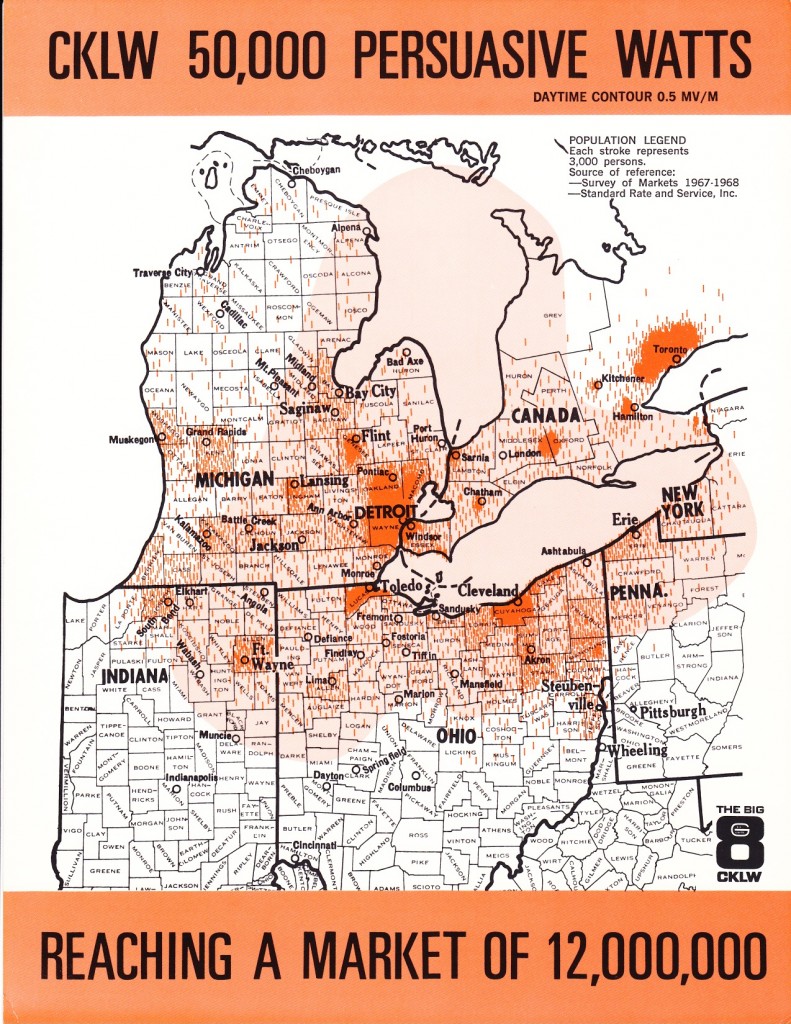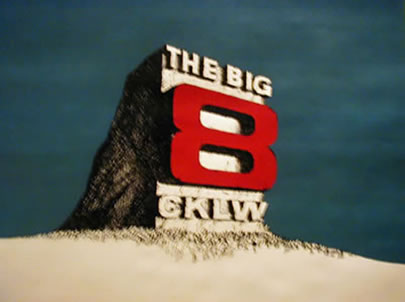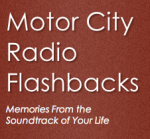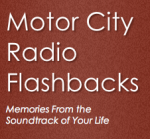![]()
Category: CKLW
THE CLASSIC BIG 8 CKLW-AM RADIO REUNION
HELLO DETROIT * CKLW’S BIG JIM EDWARDS
CKLW-TV 9 ADDS TEEN SHOW . . . JULY 31, 1965
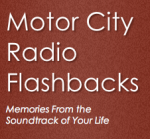 A MCRFB NEWS brief: 1965
A MCRFB NEWS brief: 1965
CKLW-TV Bows Show for Teens
 DETROIT — A Canadian TV station, CKLW-TV, which also serves Detroit, has kicked-off an hour daily variety show for teenagers called ‘Swingin’ Summertime.’ Host of the show, which features both live and taped segments, is Robin Seymour.
DETROIT — A Canadian TV station, CKLW-TV, which also serves Detroit, has kicked-off an hour daily variety show for teenagers called ‘Swingin’ Summertime.’ Host of the show, which features both live and taped segments, is Robin Seymour.
Among the artists appearing on the first show were the Rolling Stones, Gene Pitney, Dwayne Hickman, Paul Anka, Deborah Walley and Harry Belafonte. The show is telecast live before a teen audience at the CKLW television studios in Windsor, Ontario. END
_____________________
(Information and news source: Billboard; July 31, 1965)
![]()
IN DETROIT IT’S ‘SWINGIN’ TIME’ CKLW 9 . . . APRIL 2, 1966
Bandstand TV Scene Bears Watching — The Detroit Scene
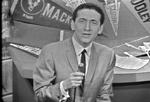
HOLLYWOOD — Teen-age bandstand TV shows come and go–and a couple of important ones met their demise during the past few months — but over-all they seem more popular than ever. Especially at the local level. A quick check of some of the nation’s major bandstand shows found them not only doing well from the advertising sponsorship angle, but in audience ratings.
“Shebang,” for instance, has been sold out the past few months and has a waiting line of advertisers, said producer Bob Burnett. And, though the Los Angeles show is no longer in syndication, it reaches a minimum of more than 4 million daily via CATV distribution throughout Southern California.

Among those national bandstand shows that became drop-outs were ABC-TV’s network “Shindig” show. “Shivaree” dropped out of syndication, but the producers are working on a new format to have it back in syndication next month. The show is now seen in the Los Angeles area.
For the national shows, formats tell the story. A local show can usually do quite well because, as talent-coordinator Art Cervi of “Swingin’ Time” in Detroit puts it, “From the local standpoint, you got a raison d’etre because you’re hitting the people–the kids–who can and do appear on the show. You have an audience participation factor that let’s people identify with you.” The Detroit show out pulls national shows in the market, said Cervi.
The Detroit Scene
“Swingin’ Time” on CKLW-TV, Detroit, is an hour bandstand show during weekdays and the Saturday hour show concentrated on featuring record artists. But so many artists are now seeking to be on the show that talent-coordinator Cervi is using them on weekdays too.
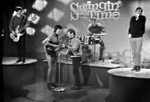
Sponsorship for the show is good. The show is supporting itself and “it looks like its going to do much better,” Cervi said. “I think there’s room for a show like this in every big market. The only trouble some shows run into in various markets is that the markets are saturated with such shows. But we’re doing so well locally that Robin Seymour has given up his radio shows to concentrate on “Swingin’ Time.”
Cervi said his show reaches 85 to 90,000 homes a weekday and around 125 to 130,000 homes during the Saturday show. END
(Information and news source: Billboard; April 2, 1966)
A MCRFB Note: Here’s several videos of ‘Swingin’ Time,’ hosted by Robin Seymour on CKLW-TV 9 in the 1960s. A young Johnny Rivers and Bob Seger enhances as highlights as they appeared on the show. The complete shows features the Supremes and the Rationals when they first appeared on the popular Detroit/Windsor TV dance show.
![]()
CKLW ON-AIR MEMORY: WALT “BABY” LOVE! 1970
Walt “Baby” Love on 800 AM CKLW 1970
 “CKLW on a solid gold weekend answering a hit line request from Detroit” —
“CKLW on a solid gold weekend answering a hit line request from Detroit” —
When these Walt “Baby” Love airchecks were recorded in 1970, the Bill Drake era had catapulted CKLW to No. 1 in radio ratings in Motown. The Big 8 was the most listened to radio station in Detroit, Toledo, Cleveland, and in Windsor, Sarnia, Leamington, Ontario and beyond.
With 50,000 watts of pure-enery emanating from the AM 800 transmitter towers outside it’s studios, the nighttime coverage was even more widespread after sundown. Reportedly at times, the CKLW signal could clearly be heard bouncing across four Provinces in Canada and in 28 states. The ‘CK signal had been picked up going far east well into Connecticut, and on some nights deep down into Florida as well.
But it was the Drake-Chenault format that drove the station to the very top. Tight and innovating, it moved faster than the competition drawing more emphasis on the playlist with less talk. By the early 1970s, CKLW was the most listened to radio station here in the Motor City.
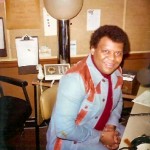 Walt “Baby” Love became the first Black on-air talent at RKO radio, hosting radio shows at CKLW and WOR FM radio in New York City. He has held on-air positions at WNBC, WBLS and 99X, all located in New York City, as well as KHJ, KMPC and KFI Los Angeles. Walt was also Urban Radio and Music Editor at the Radio & Records publication for 21 years.
Walt “Baby” Love became the first Black on-air talent at RKO radio, hosting radio shows at CKLW and WOR FM radio in New York City. He has held on-air positions at WNBC, WBLS and 99X, all located in New York City, as well as KHJ, KMPC and KFI Los Angeles. Walt was also Urban Radio and Music Editor at the Radio & Records publication for 21 years.
In 2005, Walt Love earned a Master of Arts degree in Theology from Fuller Theological Seminary of Pasadena, California. Today, Rev. Walt Baby Love currently resides in Los Angeles with his wife Sonya and son Stephen.
CKLW – WALT “BABY” LOVE – 1970
![]()
CKLW SALUTES MOTOWN SOUND . . . SEPTEMBER 30, 1967
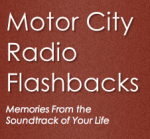 A MCRFB NEWS brief: 1967
A MCRFB NEWS brief: 1967
Billboard; September 30, 1967
 Mike Rivers, air-personality with CKLW, chatted with Diana Ross of Motown Records last August during a three-week presentation of the Hot 100 station spotlighting records by hometown Detroit artists–namely Motown record artists.
Mike Rivers, air-personality with CKLW, chatted with Diana Ross of Motown Records last August during a three-week presentation of the Hot 100 station spotlighting records by hometown Detroit artists–namely Motown record artists.
Special jingles by the Johnny Mann Singers introduced each Motown record, and the station gave away copies of Motown albums featuring 16 Motown hits. END
The CKLW BIG 30 Survey Guide (pictured) is from the week of August 29, 1967
__________________
(Information and news source: Billboard; September 30, 1967)
![]()
CKLW AND TOM CLAY SPLIT . . . JULY 11, 1964
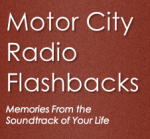 From the MCRFB NEWS archive: 1964
From the MCRFB NEWS archive: 1964
Clay, CKLW Split ‘Amiable’

DETROIT — The departure of featured deejay Tom Clay from CKLW last week was as an “amiable termination” based on Clay’s decision to quit because he was not able to spin his own records, and was not based on any difference of programming, as reported elsewhere.
Clay felt he was not doing enough on his show when not allowed to play the records himself, but John Gordon, CKLW’s program director, told Billboard that present contracts with both the engineers and AFTRA prohibit this practice at the station.
Last week the Tom Clay show was replaced by the Terry Knight show, Monday through Friday, 7 to 11 p.m. and 1 to 6 p.m. on Sundays. Knight comes from WTRX, Flint, where he had a similar show and was formerly a deejay on WJBK. END
___
(Information and news source: Billboard; July 11, 1964)
![]()
Remembering Swingin’ Time and Club 1270
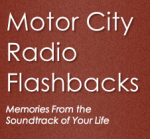 From Scott Westerman and Keener13.com:
From Scott Westerman and Keener13.com:
“Swingin’ Time” the HOTTEST Dance Show on TV in Detroit
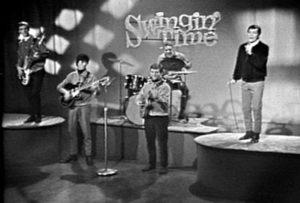
By the mid-60s, Detroit could claim two television programs that mirrored the successful formula of Dick Clark’s American Bandstand. Club 1270 and Swingin Time became the Motor City’s showcase for the stars and would-be stars of rock n roll. We got our first glimpses of local heroes like Jamie Coe and Bob Seger also worldwide sensations like Leslie Gore and the Rolling Stones in glorious black and white.
___
For more on the history of Club 1270 and Swingin time, along with two classic video clips, visit keener13.com.
![]()
1976: CHARLIE VAN DYKE PAYS TRIBUTE TO “THE FLAG”
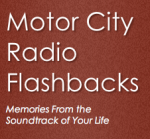 Charlie Van Dyke’s Bicentennial Salute to the American Flag in 1976
Charlie Van Dyke’s Bicentennial Salute to the American Flag in 1976
… Is it possible to wave the flag too much … provided of course, that you wave it with integrity….
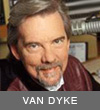 Charles Leo Steinle aka Charlie Van Dyke, first launched his career in radio broadcasting in 1966, as a nineteen-year old with the legendary KLIF 1190 in Dallas, Texas. By the early 1970s, and rapidly-rising in the industry known for his baritone pipes, his distinct voice behind the radio microphone would eventually carry him to major markets around the country.
Charles Leo Steinle aka Charlie Van Dyke, first launched his career in radio broadcasting in 1966, as a nineteen-year old with the legendary KLIF 1190 in Dallas, Texas. By the early 1970s, and rapidly-rising in the industry known for his baritone pipes, his distinct voice behind the radio microphone would eventually carry him to major markets around the country.
Harnessed by Bill Drake for his RKO radio stable, stops would include morning drives at KFRC in San Francisco, KHJ in Los Angeles, a short stint at CKLW in Windsor/Detroit and then it was on to WRKO in Boston.
But it’s the Bicentennial Year. 1976.
Seemingly what was lacking was a narrative to commemorate the country’s bicentennial celebration for that year. And that’s when Van Dyke decided to step in.
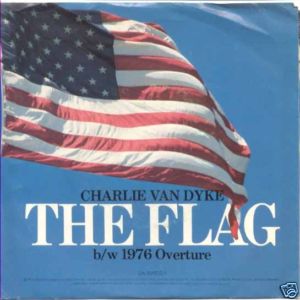
According to Charlie Van Dyke, he had retained a particular speech his uncle had written and prepared for an oratory-speech contest while in high school. His mother, in adding to the Van Dyke story, had saved a copy of that award-winning speech. That narrative saved would become The Flag.
With minor changes in the lyrics, Clive Fox worked on the produced project for release through United Artists Records. Jimmy Haskell would provide the music behind Van Dyke’s saturated, patriotic salute he voiced-over in The Flag.
Today, while no longer in radio, Charlie Van Dyke continues to free-lance his voice talents for media markets in both radio and television affiliates across the country.
Charlie Van Dyke, we thank and salute you for your acclimated 1976 display and show for true-American patriotism!
CHARLIE VAN DYKE * THE FLAG
Special thanks to George Griggs for contributing “The Flag” record/audio featured with this exhibit.
![]()
